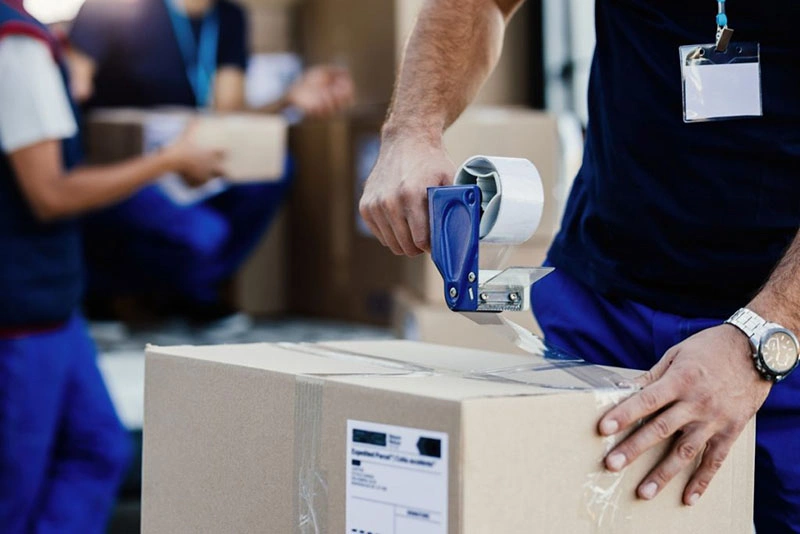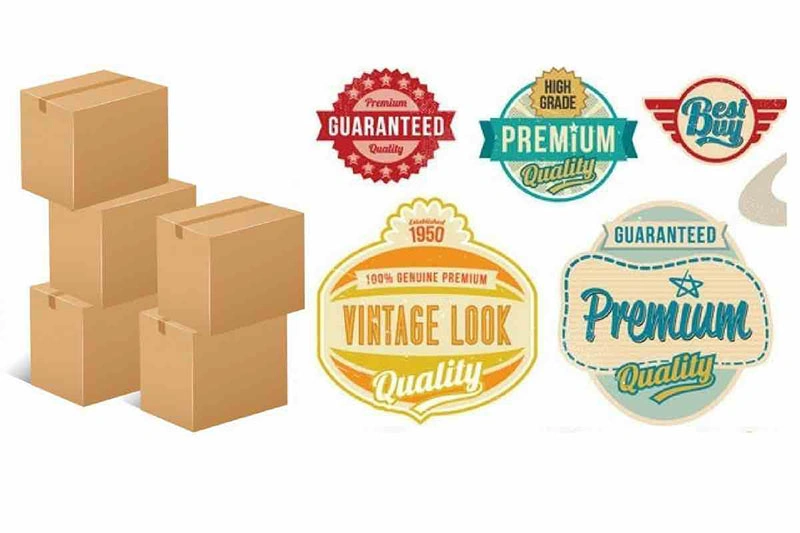While packaging and labeling can be confusing, there’s a fundamental difference between the two. While packaging protects and encloses a product, labels are printed or attached to the packaging to provide product information. This article will help you quickly distinguish between the two and avoid confusion.
Last updated: August 2025 | Estimated reading time: 6 minutes

This article will answer your questions
- The main functional differences between packaging and labeling
- Common packaging and labeling types in different industries
- How design choices impact safety, branding, and compliance
- Commonly used materials for packaging and labeling
- Their role in marketing
- Packaging and labeling laws and regulations in 2025
Functional differences between packaging and labeling
Packaging is mainly used to physically protect products and prevent them from being damaged; labels are responsible for displaying detailed information about the product and helping consumers understand the product.
Packaging makes products easy to carry, store and display; labels convey product names, specifications, instructions for use, etc., enhancing consumers’ trust in the product.
For example, a dangerous goods packaging certificate can protect lithium batteries during transportation, and the printed label on the outer box will indicate the voltage, capacity and hazard level identification such as UN3480.

| Function | Packaging Example | Labeling Example | What It Means for You |
|---|---|---|---|
| Product Safety | Corrugated shipping carton for export | Warning labels such as “Handle with Care” | Reduce transit damage and claim risk |
| Brand Image | Premium rigid gift box for cosmetics | Stickers with brand logo and product name | Improve brand recognition and trust |
| Compliance Requirements | Food-grade stand-up pouch | Nutrition Facts panel | Ensure legal entry into target markets |
- Export shipping: Choose packaging that has passed ISTA, drop and stacking tests
- Regulatory compliance: Labels must comply with necessary certification marks such as CE, UN38.3, and FDA
- Brand building: Label design should have a unified color and font style so that consumers can clearly understand the product’s efficacy and ingredients.
Real case: A Shenzhen-based lithium battery exporter reduced customs clearance delays by 40% after updating the EU transport label format in 2025.
Differences in packaging and labeling types
There are many types of packaging, such as corrugated boxes, rigid gift boxes, folding cartons, stand-up bags, bottles and cans, etc.
Label types include printed stickers, hang tags, direct printing, shrink sleeves, instruction leaflets, etc.
When choosing a specific type, consider product attributes, size, fragility, storage conditions, and target market regulations.
The packaging and labeling are designed differently
Packaging design focuses more on structure, strength and size; label design focuses more on font readability, color contrast and information accuracy.
For example, cosmetic boxes require sturdy cardboard and pattern craftsmanship, while labels are intended to clearly display the ingredient list, function, expiration date, and manufacturer.
Differences in packaging and labeling materials
Packaging commonly uses materials such as cardboard, corrugated cardboard, plastic, metal and glass, and tends to focus on physical protection and structural strength.
Labels are commonly made of environmentally friendly materials such as coated paper, synthetic films (PP, PET) and recycled kraft paper, with emphasis on surface smoothness and printing quality.
The difference between packaging and labeling in marketing
Packaging is the first medium for consumers to come into contact with products. With the popularity of short videos, a good unboxing experience is a good promotional channel.
Labels are key information that motivates customers to buy, enhancing end consumers’ trust in product safety and quality, thereby promoting sales.
Differences in packaging and labeling laws and regulations
Packaging regulations: Require compliance with national safety standards to ensure that products are not contaminated or damaged during storage, transportation, and use.
Labeling regulations: Require accurate product information, origin identification, safety marks and certification information to provide end users with necessary and authentic information.
Before exporting, you must check the requirements of the destination country, such as the EU Packaging Waste Directive and the US FDA labeling regulations.
New trends in packaging and labeling in 2025
- Environmentally friendly materials: biodegradable films and recycled cardboard become mainstream
- Smart Label: QR code links to electronic instructions and compliance certificates
- Regulatory upgrades: Stricter requirements for hazardous products and food contact materials
Brands tend to choose sustainable packaging and labels with complete information. Non-compliant labels can lead to returns, fines, or damage to brand reputation.
FAQs
Packaging is the physical structure that protects the product; labels are the information carriers attached to the product.
Different countries have different labeling regulations for imported products. In addition to product information, it is required to use the official language of the destination country.
Most packaging requires matching labels, especially food products. The label of pre-packaged food is an integral part of the packaging.
Conclusion
Packaging = product protection; labeling = information and compliance
Choose a solution that balances transportation safety and regulatory compliance.
Keep the design simple, legible, and consistent with your brand image.
Next steps: Check your existing packaging and labelling for compliance with the 2025 regulations and update if necessary to improve compliance and customer trust.
About XiangGe Package
We provide export packaging solutions for industries such as cosmetics, electronics, and food, ensuring that packaging and labeling comply with international transportation standards and compliance requirements.
Contact us: Apply for free packaging and labeling compliance inspection services.
Last update: August 2025
Recommended internal link:

